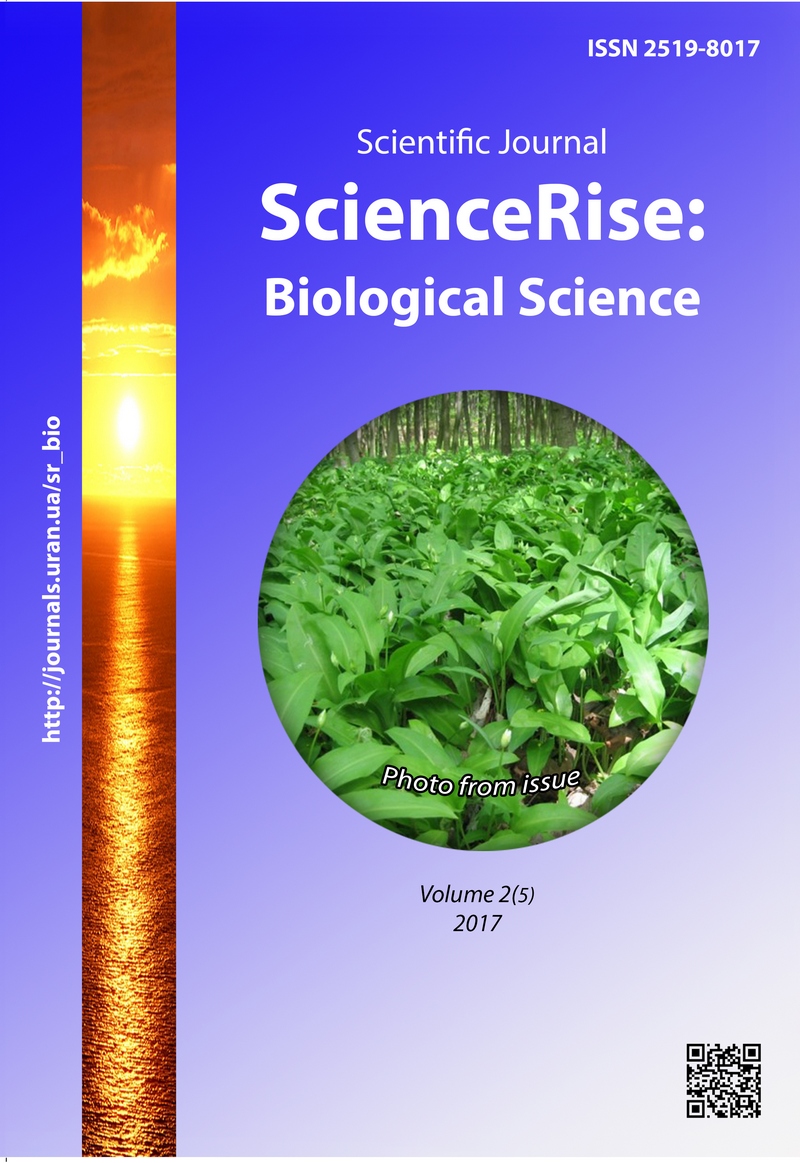Порівняльний аналіз нематодофауни епіфітних мохів рекреаційних парків міста Чернігова
DOI:
https://doi.org/10.15587/2519-8025.2017.99884Ключові слова:
епіфітні мохи, нематодофауна, Чернігів, домінування, індекси схожості, індекс зрілостіАнотація
На території м. Чернігова в трьох рекреаційних парках вивчали фауну нематод епіфітних мохів. Зареєстровано 40 видів нематод, які належать до 20 родин та 8 рядів. Дванадцять видів виявилися спільними для досліджених парків. В угрупованнях нематод більш чисельними були представники родини Plectidae. Встановлено, що стан середовища для існування нематод епіфітних мохів кращий в урочищі “Кордівка”, про що свідчать показники багатства та різноманітності фауни, ступеня домінування, зрілості угруповань
Посилання
- Steiner, W. A. (1994). The influence of air pollution on moss-dwelling animals: 1. Aquatic fauna with emphasis on Nematoda and Tardigrada. Revue Suisse de Zoologie, 101, 699–724. doi: 10.5962/bhl.part.79925
- Glime, J. M. (2007). Invertebrates: Nematodes. Chapt. 4–3. Bryophyte Ecology. Vol. 2. Available at: http://www.bryoecol.mtu.edu
- Sayre, R. M. (1971). Microfauna of Moss Habitats. The American Biology Teacher, 33 (2), 100–105. doi: 10.2307/4443334
- Lazarova, S., Penev, L., Peneva, V. (2000). Nematode assemblages from the moss Hypnum cupressiforme Hedw. growing on different substrates in a balkanic durmast oak forest (Quercus dalechampii Ten.) on Mount Vitosha, Bulgaria. Nematology, 2 (3), 263–272. doi: 10.1163/156854100509132
- Barbuto, M., Zullini, A. (2006). Moss inhabiting nematodes: influence of the moss substratum and geographical distribution in Europe. Nematology, 8 (4), 575–582. doi: 10.1163/156854106778614065
- Zullini, A., Peretti, E. (1986). Lead pollution and moss-inhabiting nematodes of an industrial area. Water, Air, & Soil Pollution, 27 (3-4), 403–410. doi: 10.1007/bf00649421
- Steiner, W. A. (1995). The influence of air pollution on moss-dwelling animals: 5. Fumigation experiments with SO2 and exposure experiments. Revue Suisse de Zoologie, 102 (1), 13–40.
- Kiryanova, E. S., Krall, E. L. (1969). Paraziticheskiye nematody rasteniy i mery bor'by s nimi [Parasitic Nematodes of Plants and Measures of their Control]. Vol. 1. Leningrad: Science, 447.
- Goodey, T., Goodey, J. B. (1963). Soil and freshwater nematodes. London: Methuen & Co LTD, 544.
- Abebe, E., Andrassy, I., Truanspurger, W. (Eds.) (2006). Freshwater nematodes: ecology and taxonomy. Cambridge: CABI Pub., 13–30. doi: 10.1079/9780851990095.0000
- Bongers, T. (1990). The maturity index: an ecological measure of environmental disturbance based on nematode species composition. Oecologia, 83 (1), 14–19. doi: 10.1007/bf00324627
- Yeates, G. W., Bongers, T., De Goede, R. G. M., Freckman, D. W., Georgieva, S. S. (1993). Feeding habits in soil nematode families and genera – an outline for soil ecologists. Journal of nematology, 25 (3), 315–331.
- Brzeski, M. W. (1995). Changes of the nematode fauna in the successive age classes of a Scots pine forest. Fragmenta Faunistica, 38 (14-25), 339–345. doi: 10.3161/00159301ff1995.38.15.339
##submission.downloads##
Опубліковано
Як цитувати
Номер
Розділ
Ліцензія
Авторське право (c) 2017 Tetiana Zhylina, Valentyna Shevchenko

Ця робота ліцензується відповідно до Creative Commons Attribution 4.0 International License.
Наше видання використовує положення про авторські права Creative Commons CC BY для журналів відкритого доступу.
Автори, які публікуються у цьому журналі, погоджуються з наступними умовами:
1. Автори залишають за собою право на авторство своєї роботи та передають журналу право першої публікації цієї роботи на умовах ліцензії Creative Commons CC BY, котра дозволяє іншим особам вільно розповсюджувати опубліковану роботу з обов'язковим посиланням на авторів оригінальної роботи та першу публікацію роботи у цьому журналі.
2. Автори мають право укладати самостійні додаткові угоди щодо неексклюзивного розповсюдження роботи у тому вигляді, в якому вона була опублікована цим журналом (наприклад, розміщувати роботу в електронному сховищі установи або публікувати у складі монографії), за умови збереження посилання на першу публікацію роботи у цьому журналі.










